DME, or Distance Measuring Equipment, is the unsung hero of aviation navigation—providing pilots, air traffic controllers (ATC), and aviation operators with the precise distance data needed to avoid hazards, maintain flight paths, and ensure every phase of flight runs smoothly. For anyone in aviation, from private pilots flying single-engine Cessnas to commercial airlines managing global fleets, DME isn’t just a “nice-to-have” tool; it’s a regulatory requirement and a foundational element of safe, efficient flight operations. In this comprehensive guide, we’ll dive deep into everything you need to know about DME: how it works, its role in every flight phase, why it outperforms other navigation systems, how to choose the right DME equipment, and why Haisen Aviation’s DME solutions stand out as the top choice for aviation professionals worldwide. By the end, you’ll understand why DME remains irreplaceable in modern aviation—and how investing in high-quality DME can transform your fleet’s safety, efficiency, and bottom line.
What Is DME in Aviation? Breaking Down Distance Measuring Equipment’s Core Purpose
At its heart, DME (Distance Measuring Equipment) is a ground-based radio navigation system designed exclusively to calculate the slant range distance between an aircraft and a fixed ground-based DME station. Unlike navigation tools like VOR (which focuses on direction) or GPS (which relies on satellites), DME’s sole mission is to deliver accurate, real-time distance data in nautical miles (NM)—making it a unique and non-negotiable component of aviation safety.
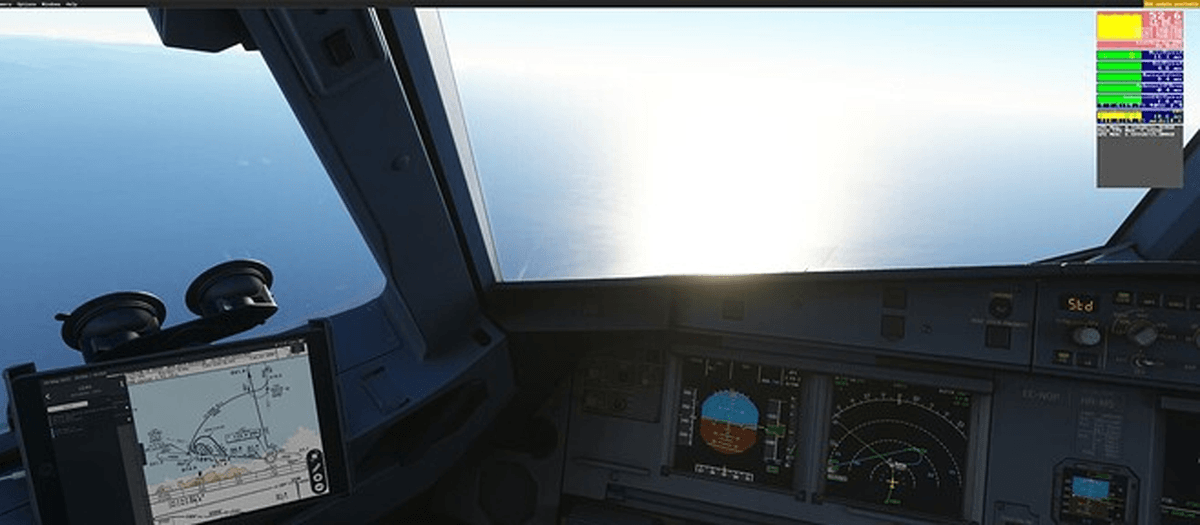
Key Definitions: Slant Range vs. Horizontal Distance
When we talk about DME, we often reference “slant range distance.” This is the straight-line distance between the aircraft and the ground DME station, accounting for both horizontal distance and altitude. For example, if an aircraft is flying at 10,000 feet above a DME station and has a horizontal distance of 5 NM from the station, the DME will display a slant range slightly more than 5 NM (due to the vertical component). While this difference is minimal at low altitudes or long distances, DME’s ability to measure slant range ensures pilots always have a true, unfiltered view of their proximity to critical waypoints—whether that’s an airport, a restricted airspace boundary, or an approach fix.
Who Uses DME? Every Type of Aviation Operator
DME isn’t limited to large commercial jets. It’s used across the aviation spectrum:
- General Aviation: Private pilots rely on DME to navigate remote areas where GPS signals may be weak, ensuring they stay on course to small airports.
- Commercial Airlines: Boeing 787s, Airbus A350s, and other large jets use DME to comply with ATC instructions, maintain airway boundaries, and execute precise instrument approaches.
- Helicopters: Emergency medical services (EMS) and offshore helicopter operators use DME to hover at safe distances from oil rigs or hospitals, even in low-visibility conditions.
- Military Aviation: Military pilots use DME (often paired with TACAN systems) for tactical navigation, including low-level flights and mission-specific waypoint tracking.
No matter the aircraft type, DME’s simplicity, reliability, and cost-effectiveness make it accessible to all operators. And with Haisen Aviation’s DME product line—designed to work with every aircraft from small prop planes to large airliners—there’s a DME solution tailored to your needs.
Why DME Is Non-Negotiable: Regulatory and Safety Mandates?
Global aviation authorities like the International Civil Aviation Organization (ICAO), the U.S. Federal Aviation Administration (FAA), and the European Union Aviation Safety Agency (EASA) all mandate DME for instrument flight rules (IFR) operations. IFR flights rely on non-visual navigation, and DME ensures pilots can:
- Comply with ATC instructions (e.g., “Maintain DME 8 from the airport until further clearance”).
- Execute instrument approaches (e.g., DME Arc approaches or ILS/DME precision approaches).
- Avoid restricted airspace (e.g., “Remain outside DME 5 of the military operating area”).
Without DME, IFR flight would be impossible—and even visual flight rules (VFR) pilots benefit from DME’s ability to confirm position and avoid collisions.
How Does DME Work? A Step-by-Step Breakdown of DME’s Technology?
To fully appreciate DME’s value, you need to understand its technical inner workings. DME operates on ultra-high frequency (UHF) radio waves (960–1215 MHz)—a band reserved for aviation to minimize interference—and relies on a simple but powerful principle: time measurement. Radio waves travel at a constant speed (approximately 186,000 miles per second, or 300,000 kilometers per second), so by measuring how long it takes for a signal to travel from the aircraft to the ground station and back, DME can calculate distance with pinpoint accuracy.
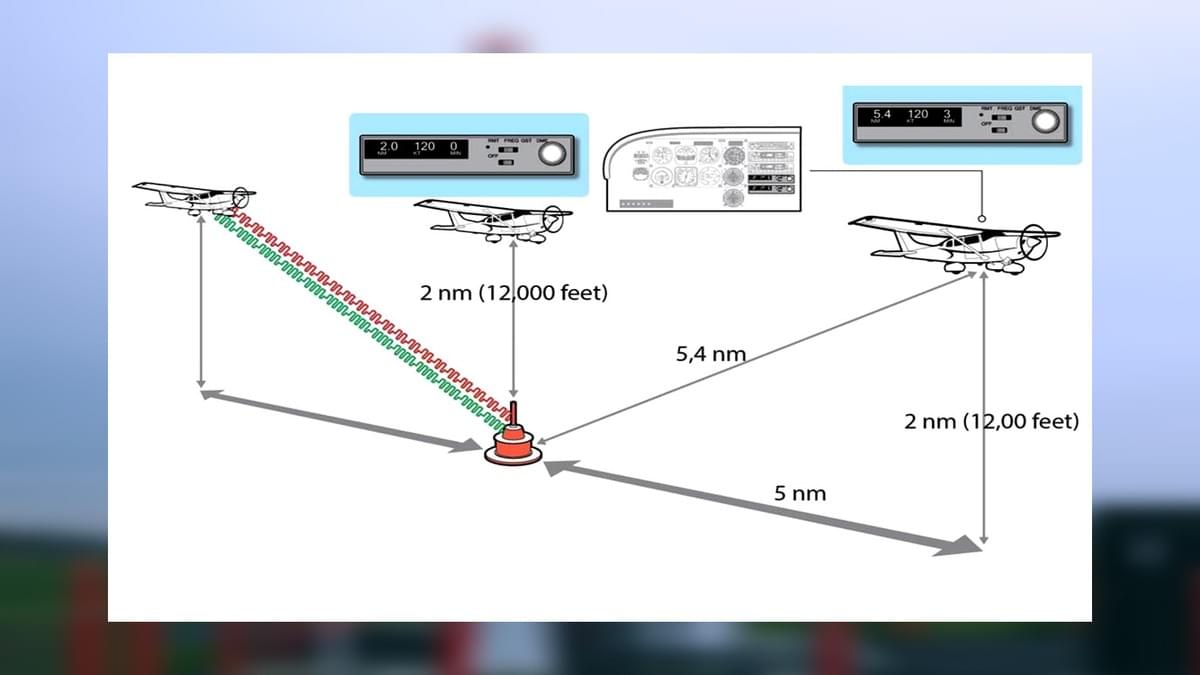
The DME System: Two Core Components
Every DME system has two essential parts: the airborne DME transceiver (on the aircraft) and the ground-based DME station (at airports, waypoints, or along airways). Let’s break down how these components work together, step by step.
Step 1: The Aircraft’s DME Transceiver Sends Pulsed Signals
The airborne DME transceiver—mounted in the aircraft’s avionics bay—initiates the process by sending a series of paired pulsed radio signals to the ground DME station. These pulses are unique to DME, with a specific time interval (12 microseconds) between each pulse in a pair. This unique pattern ensures ground stations don’t confuse DME signals with those from other systems (like VOR or ILS).
Haisen’s airborne DME transceivers take this a step further: they use AI-powered signal encoding to reduce interference from other radio sources. Even in busy airspaces (like over major cities or hub airports), Haisen’s DME transceivers ensure signals are clear and recognizable—critical for maintaining accuracy.
Step 2: The Ground DME Station Responds Instantly
When the ground-based DME station receives the aircraft’s pulsed signals, it immediately transmits a reply signal—also a series of paired pulses, timed to match the incoming signal’s pattern. Ground DME stations are designed to handle dozens (even hundreds) of aircraft simultaneously, so they can process and respond to signals from multiple planes without delays or interference.
Haisen’s ground DME stations are built for maximum reliability: they include redundant transmitters/receivers, backup power supplies (batteries and generators), and remote monitoring capabilities. This means even during power outages or extreme weather, Haisen’s ground DME stations stay operational—ensuring your aircraft never loses access to critical distance data.
Step 3: The Aircraft’s DME Measures Time and Calculates Distance
Once the airborne DME transceiver sends a signal, it starts a timer. When it receives the ground station’s reply, it stops the timer and calculates the round-trip time (the time it took for the signal to go to the station and back). Using the known speed of radio waves, the DME then converts this time into distance using a simple formula:
Distance (NM) = (Round-Trip Time in Microseconds × 0.0001667)
Let’s break this down with an example: If the round-trip time is 600 microseconds, the distance would be 600 × 0.0001667 = 0.1 NM. This level of precision—usually within 0.1 NM—makes DME ideal for critical phases of flight, like final approach, where even a small distance error could lead to a hazard.
Step 4: DME Displays Data to the Pilot
The calculated distance is displayed on the aircraft’s navigation panel, usually as a digital or analog readout in nautical miles. Advanced DME systems (like Haisen’s) go further, displaying:
- Groundspeed: Derived from continuous distance measurements (e.g., if DME decreases by 4 NM in 1 minute, groundspeed is 240 knots).
- Time-to-Station: Calculated by dividing current distance by groundspeed (e.g., 40 NM ÷ 4 NM per minute = 10 minutes to station).
- Distance Alerts: Customizable alerts for critical distances (e.g., “Alert when DME reaches 2.5 for final approach”).
Haisen’s DME displays are designed for maximum visibility: digital screens with high contrast work in both bright sunlight and night conditions, and integrated multifunctional displays (MFDs) combine DME data with VOR, GPS, and ILS information—reducing cockpit clutter and improving situational awareness.
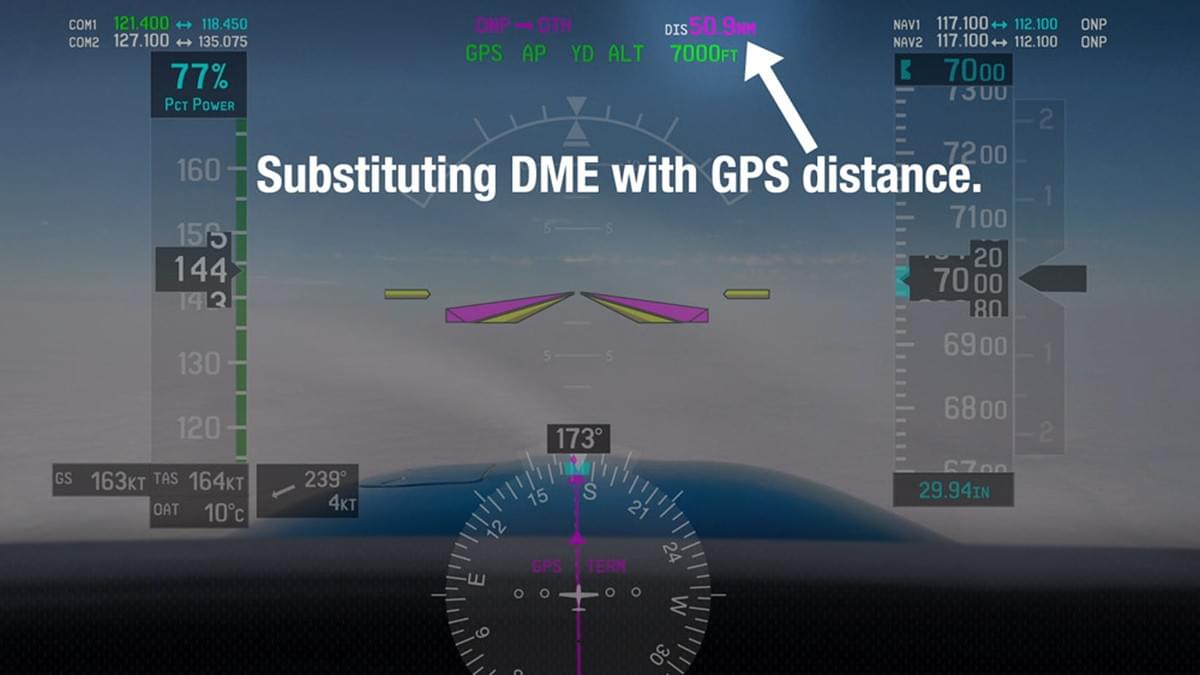
Why DME Is So Accurate: Overcoming Common Navigation Challenges
DME’s accuracy is one of its greatest strengths—and it outperforms other systems in key scenarios:
- No Weather Interference: Unlike visual navigation (which fails in fog, rain, or darkness), DME works in all weather conditions. Radio waves aren’t blocked by clouds, snow, or storms, so DME remains reliable even when other tools fail.
- High-Speed Precision: Even at speeds exceeding 600 mph (typical for commercial jets), DME maintains accuracy within 0.1 NM. This is critical during takeoff and climb, where pilots need to reach specific altitudes at precise DME distances.
- No Multipath Errors: GPS signals can bounce off buildings or terrain (called “multipath interference”), leading to inaccurate readings. DME’s ground-based signals avoid this issue, ensuring accuracy even near airports with tall structures.
DME in Every Flight Phase: How DME Keeps Flights Safe from Takeoff to Landing
DME isn’t just used during one part of a flight—it’s integral to every phase, from pre-takeoff preparations to post-landing rollout. Let’s explore how DME supports pilots at every step, with real-world examples and how Haisen’s DME solutions enhance performance.
Pre-Takeoff and Taxiing: DME Confirms Position and Prevents Errors
Before takeoff, pilots use DME to verify their position relative to nearby DME stations—ensuring they’re on the correct taxiway and aligned with the runway. This is especially critical at large airports (like Atlanta Hartsfield-Jackson or Dubai International) with complex layouts, where taxiway mix-ups can lead to runway incursions (a top cause of aviation accidents).
Real-World Example:
An airline pilot at London Heathrow Airport receives ATC instructions: “Cleared to taxi to Runway 27L, maintain DME 1.2 from the central DME station.” Using Haisen’s DME display, the pilot monitors the readout as they taxi—if the DME drops below 1.2, they know they’re getting too close to the station and adjust their path. This simple check prevents the pilot from accidentally entering a closed taxiway or crossing an active runway.
Haisen’s DME transceivers also integrate with airport mapping systems, overlaying DME data on taxiway charts. This helps pilots quickly confirm their location, even in low-visibility conditions (e.g., fog at Frankfurt Airport).
Takeoff and Climb: DME Ensures Noise Compliance and Aircraft Separation
During takeoff and climb, DME plays two critical roles: adhering to noise abatement procedures and maintaining separation from other aircraft.
Noise Abatement:
Many airports (especially those near residential areas) have strict noise abatement rules that require aircraft to reach specific altitudes at certain DME distances. For example, Los Angeles International Airport (LAX) mandates: “Climb to 2,500 feet by DME 4 from the airport.” Pilots use DME to monitor their progress—if they’re not at 2,500 feet when DME reaches 4, they adjust their climb rate to avoid fines and reduce noise pollution.
Haisen’s DME systems include “noise abatement alerts,” which notify pilots when they’re approaching a critical DME/altitude checkpoint. This ensures compliance without requiring the pilot to constantly monitor the display.
Aircraft Separation:
ATC uses DME distances to assign vertical or horizontal spacing between climbing aircraft. For example, ATC might instruct: “Maintain DME 8 from the departure station, then turn left heading 360.” This ensures the aircraft doesn’t come too close to another plane climbing on a parallel route.
Haisen’s long-range DME transceivers (covering up to 199 NM) provide early visibility of other aircraft’s DME positions (via ATC data integration), allowing pilots to anticipate turns and adjustments—reducing stress and improving safety.
Cruising: DME Keeps Aircraft on Course and Prevents Fuel Shortages
In cruise flight (the longest phase of most flights), DME is essential for staying on airway routes, maintaining separation from other aircraft, and calculating fuel consumption.
Airway Navigation:
Most airways (designated routes in the sky) are defined using DME distances from VOR/DME or standalone DME stations. For example, “Airway J86 runs from Chicago O’Hare VOR/DME Station (DME 0) to Detroit Metro VOR/DME Station (DME 110).” Airways are typically 5 NM wide on either side of the centerline, and pilots use DME to ensure they stay within these boundaries—avoiding restricted airspace or other airways.
Haisen’s DME systems include “airway boundary alerts,” which warn pilots if they drift beyond the 5 NM limit. This is especially useful during long-haul flights, where pilot fatigue can lead to small course deviations.
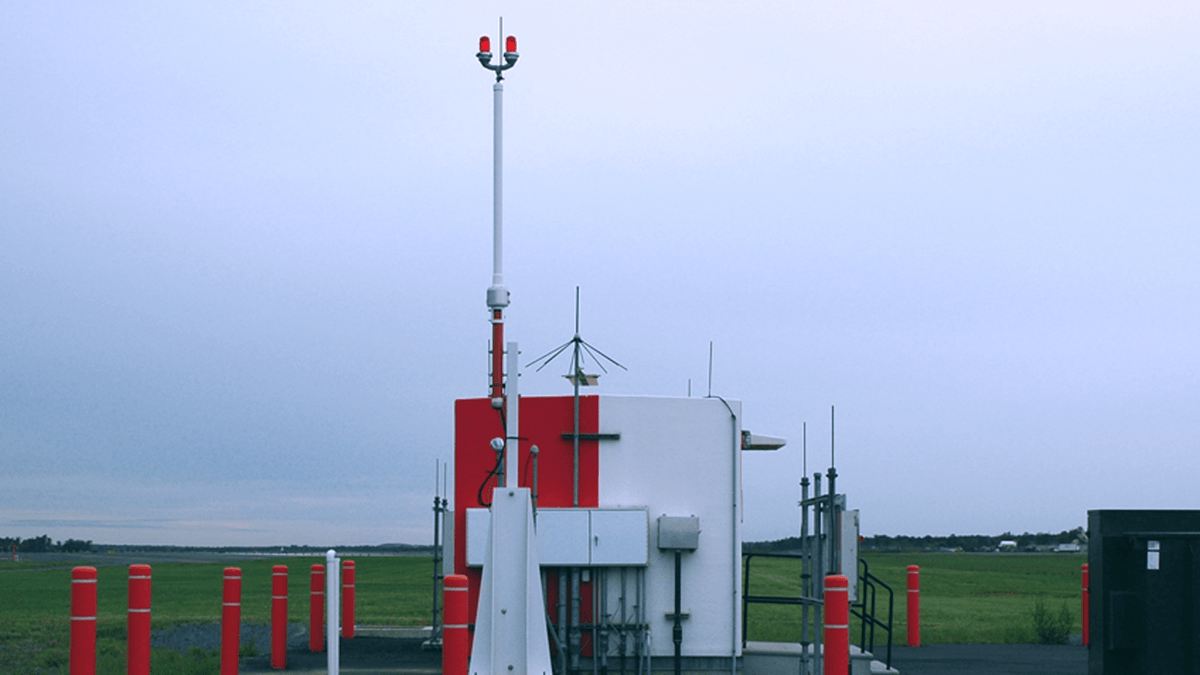
Fuel Calculation:
Knowing the exact DME distance to the next waypoint allows pilots to estimate fuel consumption with precision. For example, if a Boeing 777 is cruising at 450 knots and the next waypoint is 180 NM away, the pilot can calculate they’ll use approximately X gallons of fuel (based on the aircraft’s fuel burn rate). This prevents fuel shortages—one of the most stressful emergencies in aviation.
Haisen’s DME integrates with aircraft fuel management systems, automatically updating fuel estimates as DME distance changes. This reduces manual calculations and human error.
Holding Patterns:
When an airport is busy, ATC may instruct pilots to enter a holding pattern—circular flight paths defined by DME. A typical holding pattern might be: “Hold at DME 10 from the Boston VOR/DME Station, left turns, 1-minute legs.” Pilots use DME to stay within the holding area (e.g., not drifting below DME 9 or above DME 11), ensuring they don’t enter restricted airspace.
Haisen’s DME displays include a “holding pattern overlay,” showing the DME boundaries and leg length—making it easy for pilots to maintain the pattern, even in busy airspace.
Descent and Approach: DME Defines Critical Approach Points
Descent and approach are the most critical phases of flight, and DME is the backbone of instrument approach procedures (IAPs). Without DME, pilots would lack the precision needed to execute safe approaches—especially in low visibility.
DME Arc Approaches:
Many airports use DME Arc approaches, where aircraft fly a circular path around a DME station at a specific distance (e.g., 10 NM) until reaching the final approach course. For example, at Seattle-Tacoma International Airport, the “DME Arc 12 NM” approach requires aircraft to fly a 12 NM circle around the Seattle VOR/DME Station, adjusting their heading to maintain the arc, until they reach the final approach fix for Runway 16L.
Haisen’s DME systems use advanced algorithms to calculate the exact heading needed to maintain the arc, reducing pilot workload. The display shows a real-time “arc deviation” indicator, letting pilots know if they’re too close or too far from the station.
Decision Heights (DH) and Minimum Descent Altitudes (MDA):
DME is used to define decision points during approaches. For example, a non-precision approach might specify: “At DME 2.5 from the airport, minimum descent altitude (MDA) is 700 feet.” This means pilots can descend to 700 feet only when they reach DME 2.5—and if they don’t see the runway by that point, they must initiate a “go-around” (abort the approach).
Haisen’s DME displays include a “descent calculator,” which shows the pilot how much altitude they need to lose to reach MDA by the critical DME point. This ensures smooth, controlled descents.
Precision Approaches (ILS/DME):
ILS (Instrument Landing System) is a precision approach system that provides lateral (localizer) and vertical (glideslope) guidance. When paired with DME (ILS/DME), it adds critical distance markers:
- Outer Marker: Typically at DME 6, indicating the start of the final approach.
- Middle Marker: At DME 3,Reminder pilots to prepare for glideslope capture.
- Inner Marker: At DME 0.5, indicating the runway threshold is near.
Haisen’s ILS/DME integration ensures these markers are displayed in real time, with alerts when the aircraft reaches each DME point. This is especially valuable in low-visibility conditions (e.g., fog at Tokyo Haneda Airport), where pilots rely entirely on instrument data.
Landing and Rollout: DME Prevents Runway Incursions
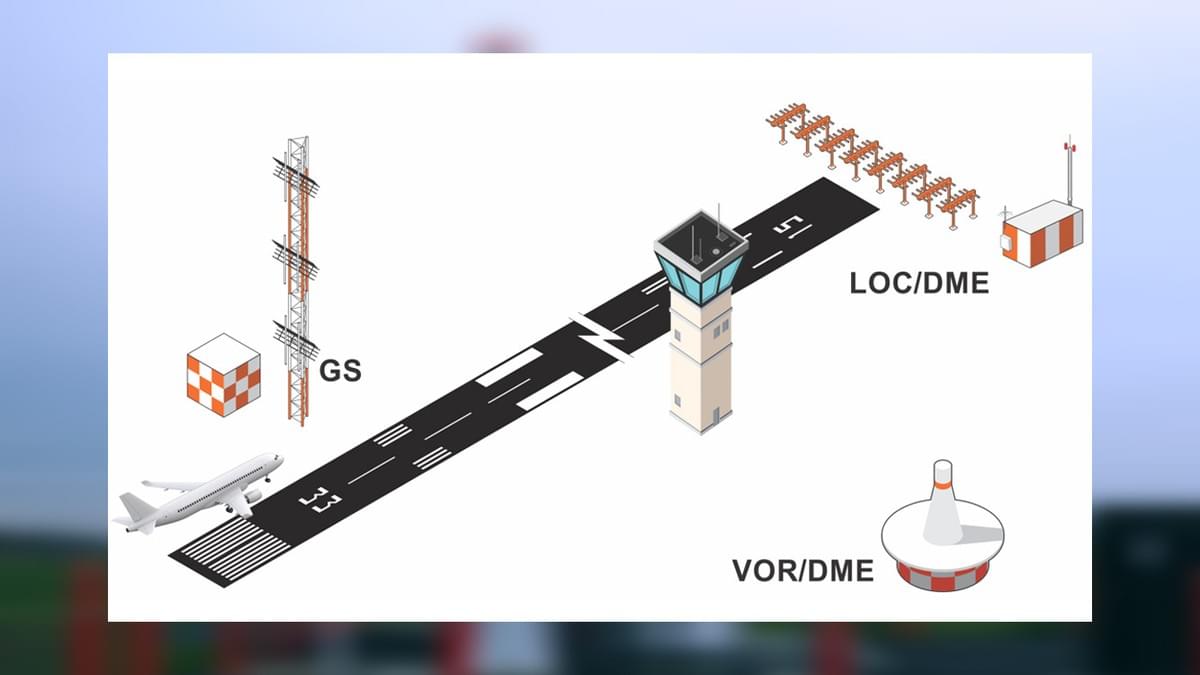
Even after landing, DME continues to add value. During rollout (the phase after touchdown), pilots use DME to confirm their distance from the runway threshold—ensuring they exit at the correct taxiway.
Real-World Example:
A pilot landing at Dallas-Fort Worth International Airport receives instructions: “Exit Runway 35R at Taxiway D, located at DME 0.9 from the threshold.” Using Haisen’s DME display, the pilot monitors the readout as they roll down the runway. When DME reaches 0.9, they know to turn onto Taxiway D—avoiding overshooting the exit and blocking the runway for other aircraft.
Haisen’s DME also records rollout data, which pilots can review during post-flight debriefs. This helps identify areas for improvement (e.g., “I exited at DME 1.0 instead of 0.9—next time, I’ll start slowing down earlier”).
Cost-Effectiveness: DME Is a Long-Term Investment
DME is one of the most cost-effective navigation systems in aviation, with low upfront costs, minimal maintenance, and long lifespans:
Low Maintenance Requirements
DME ground stations are built to last—15–20 years with minimal maintenance. Haisen’s ground DME stations include remote monitoring, so maintenance teams only need to visit sites when issues arise (not for routine checks). Airborne DME transceivers also have a long lifespan (10+ years) and require only annual calibration.
Widespread Availability Eliminates Infrastructure Costs
There are thousands of DME stations worldwide—installed at airports, waypoints, and along airways. This means you don’t need to build new infrastructure to use DME; you can leverage existing stations. Haisen’s DME systems are compatible with all global DME stations, so you don’t need to invest in proprietary infrastructure.
Compatibility with Old and New Aircraft
DME works with every aircraft type, from 1970s-era prop planes to 2025-model airliners. This means you don’t need to upgrade your entire fleet to use DME—you can install Haisen’s DME transceivers in older aircraft without replacing other avionics. A small general aviation operator using Haisen’s DME saved $20,000 by upgrading only the DME system, not the entire avionics suite.
Conclusion: DME Is Your Fleet’s Key to Safe, Efficient Flight
DME (Distance Measuring Equipment) is more than just a navigation tool—it’s the backbone of aviation safety and efficiency. From pre-takeoff taxiing to post-landing rollout, DME ensures pilots have the precise distance data they need to make split-second decisions. It outperforms other systems like GPS and VOR in critical areas (reliability, accuracy near the ground) and serves as a vital backup when other systems fail.
Choosing the right DME equipment is essential—and Haisen Aviation’s DME solutions stand out as the top choice. With proven reliability, cutting-edge technology, custom solutions, and exceptional support, Haisen’s DME systems help you enhance safety, reduce costs, and optimize every phase of flight.
Ready to upgrade your fleet’s DME? Contact Haisen Aviation today to:
- Request a free quote for DME transceivers or ground stations.
- Schedule a demo of Haisen’s DME systems (in-person or online).
- Speak with a DME expert to design a custom solution for your needs.
DME isn’t just an investment in navigation—it’s an investment in the safety and success of your aviation operations. Choose Haisen, and fly with confidence.

